Stories of Puget Sound Recovery:
Setting the Table for Fish, Farms, and Floodplains
“Farmers are the first environmentalists. If you’re not at the table, you’re not heard; I wanted to make sure ag[riculture] had a voice at the table.” – Bobbi Lindemulder, farmer and Snohomish Conservation District employee.
Bobbi Lindemulder’s passion for family farming long ago shaped her into an advocate for conservation districts. And that advocacy inspired her to “hound conservation districts until someone let me in as an intern.” Now, 23 years later, she serves the Snohomish Conservation District as Program Manager for Agricultural Engagement.
But that’s not Bobbi’s only job. After growing up in the Snoqualmie Valley, she married a dairy farmer. The two eventually evolved their business into raising cattle for beef production, responsibilities she manages alongside her role at the Conservation District. As both a farmer and a conservation advocate, Bobbi enjoys talking directly with farmers about what they need to keep their farms viable into the future. These conversations enable the Conservation District to bring the voices of the agricultural community into the Sustainable Lands Strategy (SLS), a forum begun by Snohomish County, Tulalip and Stillaguamish Tribes, state and federal agencies, and agricultural and environmental partners to build trust, increase collaboration and advance fish, farm and flood management interests.
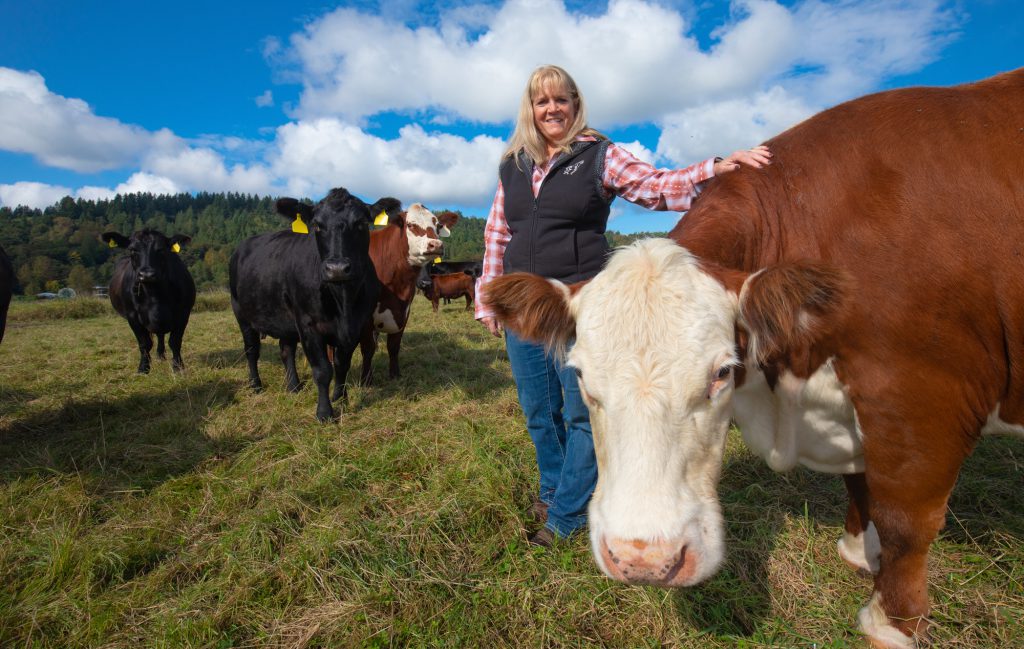
“The Sustainable Lands Strategy is a strategy, an ethos. It’s a way of doing business from the perspective of coming to the table and having dialogue,” explains Monte Marti, the former Executive Director of the Snohomish Conservation District and one of the architects of the SLS.
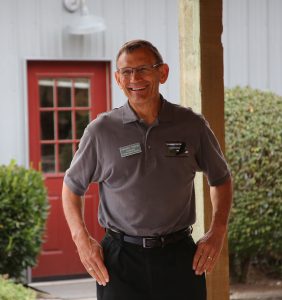
SLS emerged through collective recognition of the need to reduce conflict and litigation, by identifying and advancing shared values and priorities. Monte notes that before this group was established, “no one was cooperating. We weren’t coming together as a community. We weren’t promoting a viable agricultural industry or ensuring a beautiful Puget Sound area.”
In the Puget Sound region, farmers are being squeezed by the economics of global commodities, the pressures of development, and the impacts of climate change. Farmers need to deal with environmental impacts affecting their crops and livestock while also making sure their business operations remain financially viable. Climate change has made it more difficult to maintain year-round cattle operations because flooding patterns are now less predictable, says Bobbi. Through their participation in the SLS, farmers realized that to voice their needs they must become as well organized as those representing fish interests, who have clearly identified needs and goals, as outlined in the Snohomish River Basin Salmon Conservation Plan.
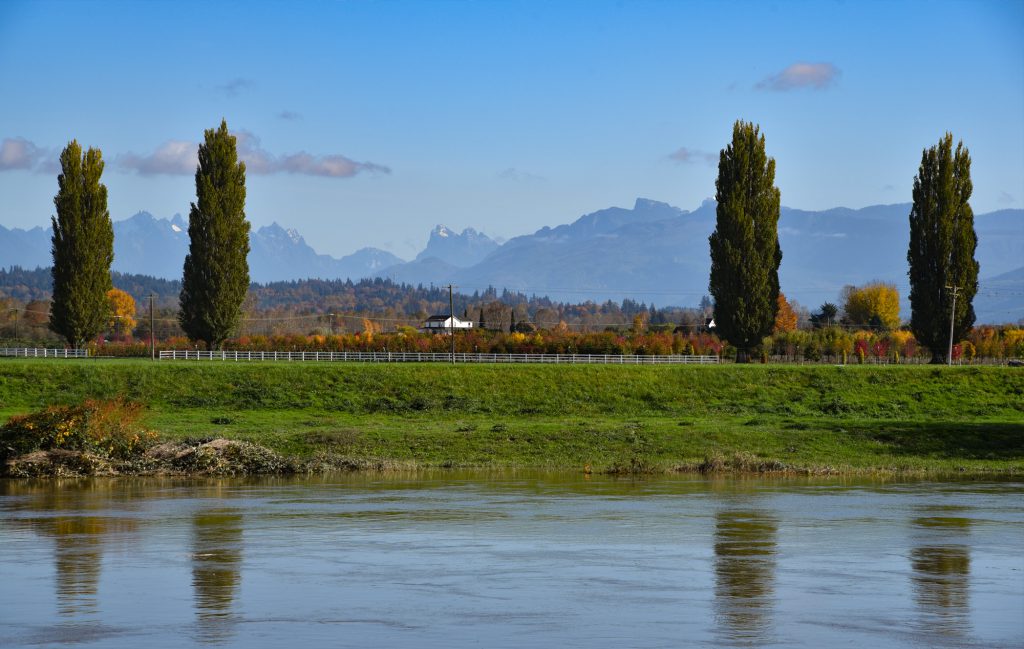
Cindy Dittbrenner, the Natural Resources Program Manager and Agricultural Resilience Lead at the Conservation District, worked with Bobbi and a team of Conservation District staff to connect with the Snohomish County Farm Bureau, Snohomish Agricultural Advisory Board, and local dike and drainage districts to solicit input on what would be most helpful to the agricultural community.
Through greater organization and understanding of communal needs, the agricultural community will be better equipped to prioritize projects that benefit the community at large. This requires the time and dedication to reach out to farmers directly and understand their concerns and needs, as the Conservation District is committed to doing.
“This has to come from the agricultural community,” Bobbi emphasizes. “There’s a lot of willingness to participate. Given the opportunity, people are willing to speak their mind. It’s been very collaborative—farmers love to chat and talk about their farms, and this provides them an avenue to do that.”
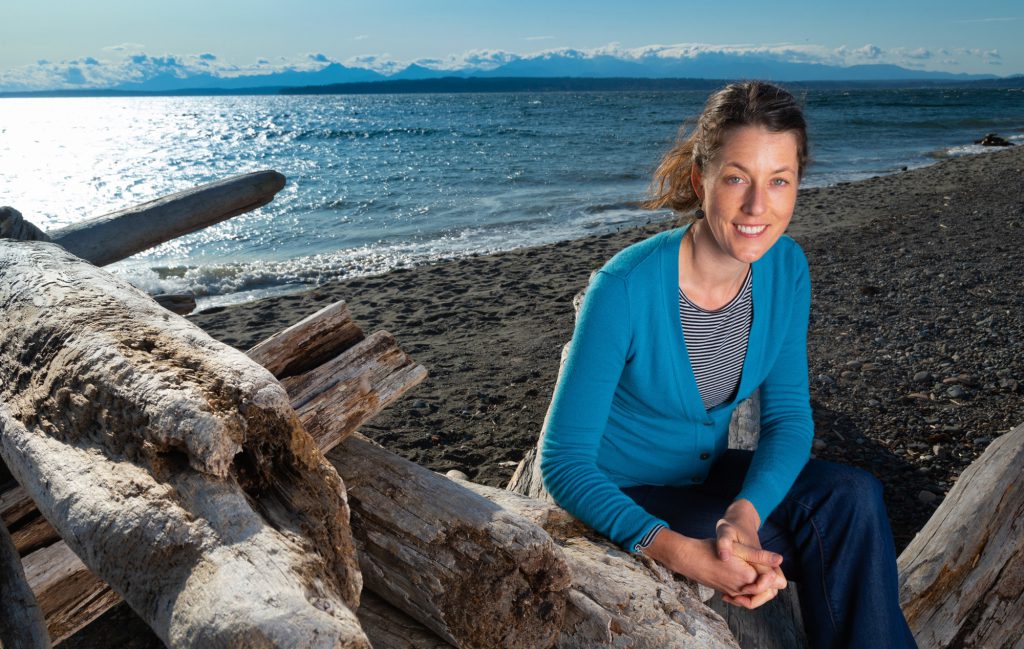
Trusted Advocates
A key product of this outreach is the Agriculture Resilience Plan, which Cindy describes as “a roadmap for ensuring we have viable farmland into the future. It helps farmers understand and plan for the increased drought, flooding, and drainage challenges associated with climate change.”
Cindy created a steering committee composed of nine farmers who meet quarterly to review input from the agricultural community and help develop the Agriculture Resilience Plan. The plan will serve as a data hub for the agricultural community and will include tools to help farmers make informed business decisions by using information from climate models. The models, built by the University of Washington Climate Impacts Group, Cardno, US Geological Survey, and Washington State University, are designed to project major threats to agricultural viability like flooding, saltwater intrusion, and groundwater and sea level rise. Cindy and her team are excited to announce the completion of the Agriculture Resilience Plan and are now launching into on-the-ground action.
Ultimately, these efforts provide a platform for more effective communication and risk management in the Snohomish County agricultural community. After countless conversations over countless cups of coffee, people have begun to “turn the corner,” says Bobbi. “They realize they’re being listened to and [feel like] part of the solution. The agricultural community just wants to be heard and have a seat at the table.”
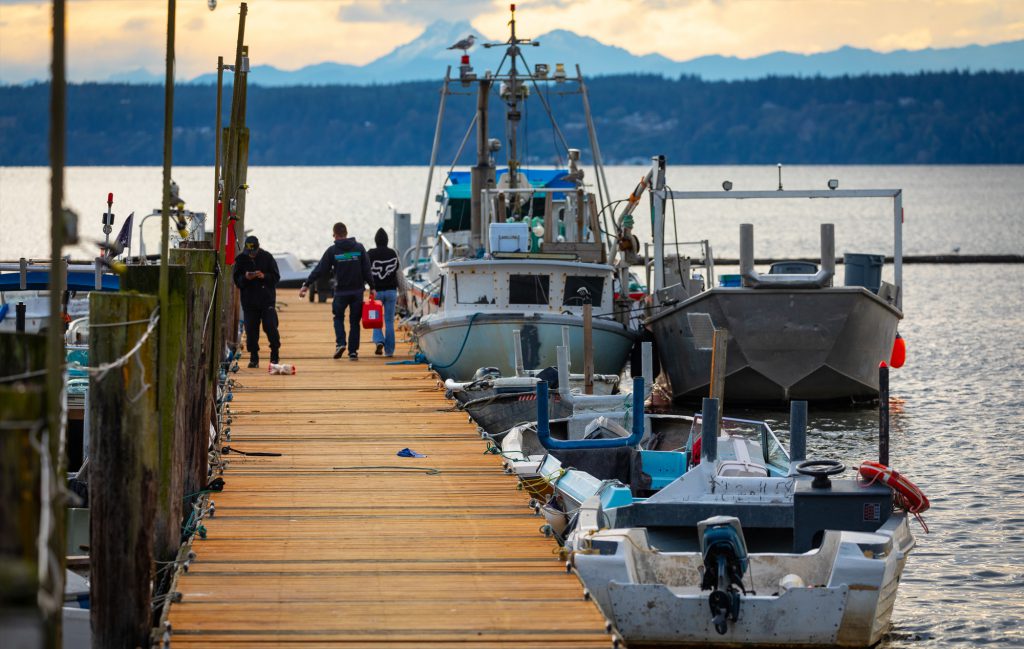
The progress that’s been made in building trust among the previously competing—and often contentious—interests at the SLS table may not be outwardly obvious, but it is crucial to the future success of SLS as a concept. Terry Williams, the Commissioner of Fisheries and Natural Resources for the Tulalip Tribes, has been instrumental in developing strong relationships between the Tulalip Tribes and the farming community. “We had to figure out together how to not cause harm to each other, but to support each other, how to combine agriculture and fish lobbies to be stronger,” he says.

The approach took time, but it’s now paying off. “After three years of meetings, we developed that trust and farmers and tribes learned what each needed and figured out how to work with each other,” Terry reports. The two sides now act as allies rather than adversaries and are working together to better steward the same landscapes and waters. Reflecting on what he’s learned from engaging in the SLS, Terry says, “the main thing is to get the relationships built. We learned how to work together and understand what each [group] means when they say ‘habitat’ or ‘productivity’.”
Sitting at the table in fish, farm, flood groups like the SLS isn’t part of a farmer’s job, and unlike many of the other participants, they aren’t compensated for their time. This means that the time spent in SLS meetings and supporting development of the Agriculture Resilience Plan is time away from their business. Farmers’ willingness to make this sacrifice is just one of the proofs that these efforts have value and are important to the agricultural community.
What’s Next
The next chapter of the SLS involves establishing an “Integration Team,” which will develop actions broadly supported to achieve goals for fish recovery, farmland preservation, and flood risk management. One such proposed farmland preservation project is included in the Action Agenda for Puget Sound, the comprehensive recovery plan that incorporates regional strategies and specific actions to restore and protect Puget Sound. The project, led by the Snohomish Conservation District, will focus on protecting high-priority farmland identified through the Agriculture Resilience Plan process by purchasing land easements and removing development rights. This farmland will be permanently protected from subdivision and development, allowing it to maintain its beneficial hydrologic and habitat functions.
The Integration Team plans to begin developing projects by the end of 2019, though some members of the SLS Executive Committee are moving forward on their own. The Stillaguamish Tribe had been part of the Executive Committee and was an early supporter of the SLS process. They elected to withdraw from formal participation in SLS in 2018 in favor of working directly with individual farmers to implement priority projects. The Tribe plans to continue to engage with SLS partners through the Integration Team, according to Pat Stevenson, an Environmental Manager with the Stillaguamish Tribe.
Meanwhile, the recently retired Monte Marti plans to continue pouring his energy into advocacy efforts to increase state-level funding for collaborative projects that strengthen agriculture, restore salmon habitat, and reduce flooding risk. Monte hopes that the future holds a bigger appetite for direct engagement efforts like those undertaken by Cindy Dittbrenner and Bobbi Lindemulder. Monte is optimistic that the SLS is here to stay, due to a clear and long-term need for the collaborative natural resource management strategies the SLS offers; a need that will only become more important in the future: “I hope the SLS is never done. It can’t be done”.
The next time you’re at a farmers market, stop to consider where this produce comes from, and what it takes to make such healthy food available to the public. Protecting sustainable farmland and supporting local food systems helps feed the region’s growing population, provide secure livelihoods and boost our economy. While continuing to learn and evolve, the SLS provides a regional model for collaboration and cooperation, demonstrating how such sustainable agriculture can thrive at the same time as addressing urban sprawl, protecting and restoring threatened salmon and reducing flood risks to residents and infrastructure.
More about the Sustainable Lands Strategy and the Agriculture Resilience Plan
The Snohomish Sustainable Lands Strategy, or SLS, was started in 2010 by Snohomish County, the Tulalip and Stillaguamish Tribes, state and federal agencies, and agricultural and environmental partners. The SLS recognizes the need for fish, farm and flood management interests to work together and collaboratively develop solutions to shared problems. In recent years SLS has supported various efforts to advance fish, farm and flood control interests, important to both farmers and ecosystem recovery. The Agriculture Resilience Plan, a collaboration between the Snohomish County Conservation District and local farmers under the umbrella of the SLS, offers a framework to grow an economically viable agricultural system that both supports food production and protects open space in Snohomish County. The Plan, developed with input from tribes and other partners, supports the community need to face the impacts of climate change and development pressure.
Vital Sign Connections
Floodplains provide important habitat for salmon, reduce damage from flooding, and support valuable farmlands. The Sustainable Lands Strategy was established with the intent that fish, farm, and flood management advocates can make more progress toward their goals by working together.
Eating local foods provides a suite of benefits for human wellbeing. The act of collecting, preparing and sharing local foods maintains cultural knowledge and practices while building social relationships. Floodplain habitat in the Puget Sound region provides an abundance of locally harvestable foods.
Natural resource industries such as agriculture support the economic vitality of the Puget Sound region. Harvest and farming activities provide jobs and wages in rural areas. The Agriculture Resilience Plan provides information to help farms remain economically viable into the future.
Action Agenda Connections
The Action Agenda—the Puget Sound Partnership’s regional plan for protecting and recovering Puget Sound—highlights the importance of Puget Sound floodplains in supporting fishable, swimmable and drinkable waterways, while also emphasizing the following considerations:
- Floodplains provide important habitat for salmon,
- Sustainably managed agricultural lands in floodplains should be conserved; and
- Floodplain protection depends on our understanding of how changing climate and ocean conditions will affect floodplain habitat.
The work featured above was supported as a priority Near Term Action (NTA) in the 2016-2018 Action Agenda and addresses a regional priority to restore floodplains. The 2018-2022 Action Agenda includes additional NTAs that will contribute to planning, implementing, and monitoring multi-benefit floodplain protection and restoration actions in Snohomish County.
- Sustainable Lands Strategy Communication and Outreach (2018-0097)
- Integrating climate resilience into farm-fish-flood project packages in the Snohomish and Stillaguamish River floodplains (2018-0715)
- Snohomish County Farmland Protection Initiative (2018-0872)
- Monitoring effectiveness of multi-benefit floodplain project implementation in Snohomish and Stillaguamish rivers (2018-0873)
Find out more about proposed and active Puget Sound protection and restoration projects in the Action Agenda Tracker.

